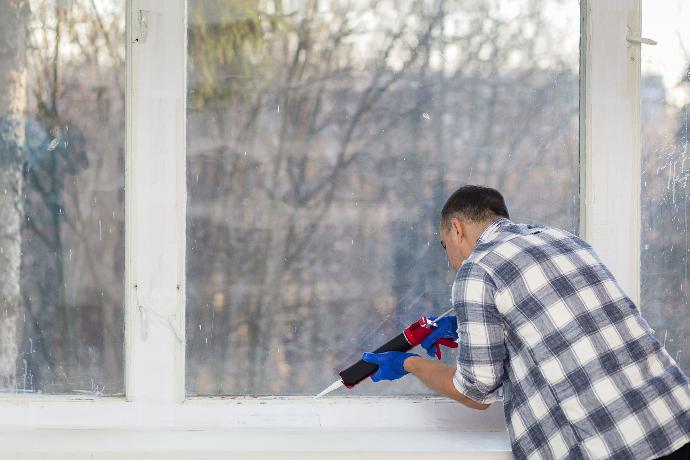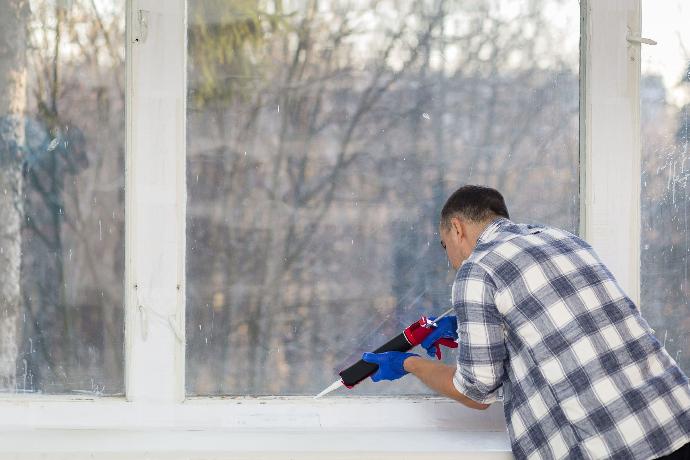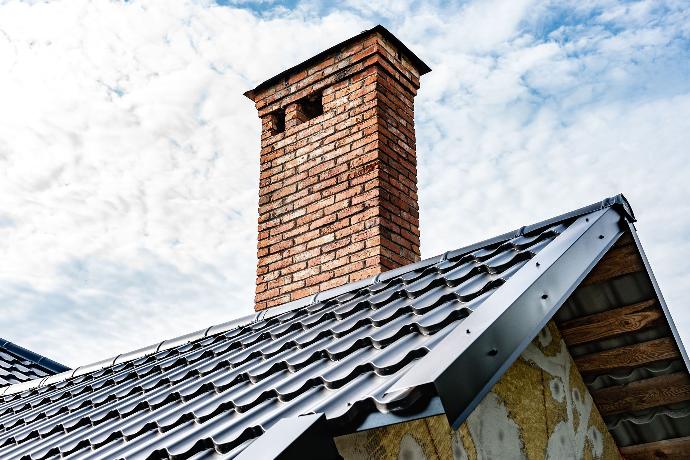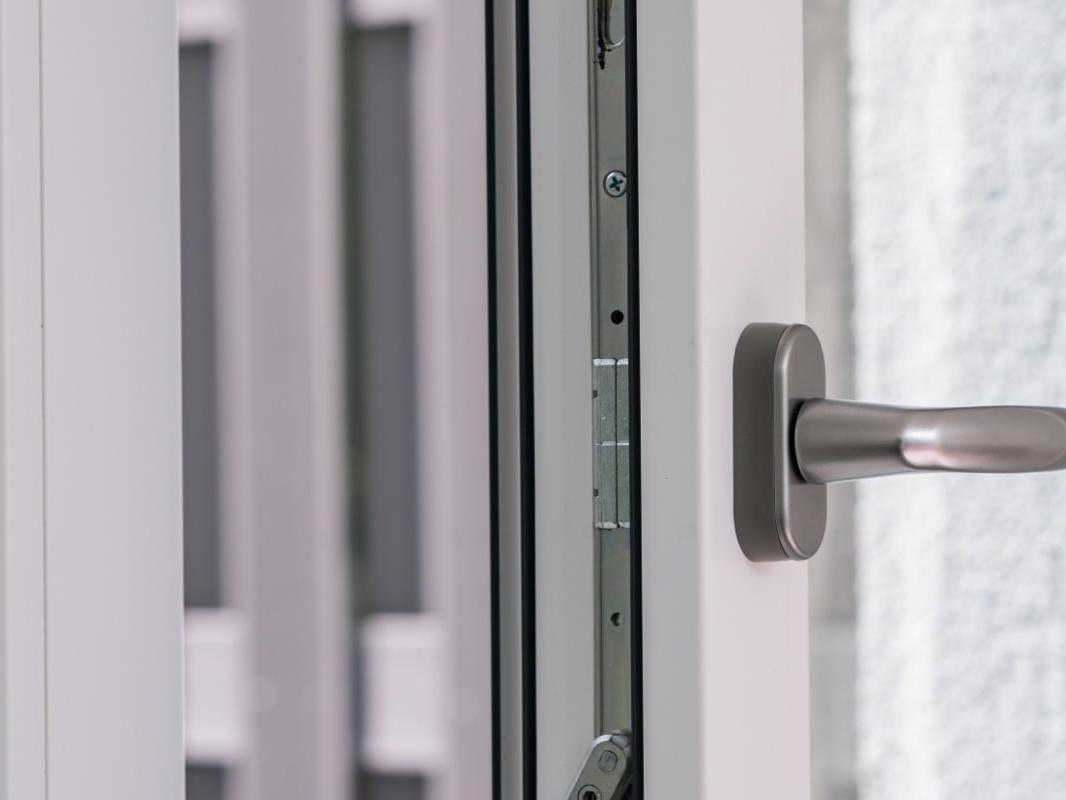 Add My Company
Add My Company
How Can I Draught Proof My Home?

Draught-proofing is an essential step in making your home energy-efficient and reducing your gas and electric bill. It helps address the issue of cold air currents infiltrating warm living areas, primarily through gaps around your windows and doors. These draughts allow warm air to escape and cold air to enter. This decreases the temperature of the room making your heating system work harder to maintain a comfortable temperature, leading to increased energy consumption and higher energy bills.
Identifying and sealing these gaps is the core principle of draught-proofing. It not only helps in reducing heating costs but also plays a critical role in creating a consistently warm and comfortable living space. While ensuring proper ventilation to prevent condensation and dampness is important, distinguishing between necessary airflow and problematic draughts is key.
This article discusses the benefits of draught-proofing and aims to guide you through the steps of identifying and addressing areas in your home prone to draughts.
Benefits of Draught-Proofing
Draught-proofing is a practical approach to enhancing the energy efficiency of a home that offers numerous benefits from increased comfort to financial savings.
One of the primary advantages of draught-proofing is improved energy efficiency. By sealing gaps around your windows and doors you can prevent the escape of warm air and the entry of cold air. The added efficiency in maintaining a stable indoor temperature allows your heating system to use less energy, leading to a noticeable reduction in your energy bills. Over time these savings can be significant, offsetting the initial investment associated with purchasing various seals and draught-proofing material.
As the world increasingly seeks sustainable living practices to protect the environment, reducing the amount of energy needed to heat a home lessens your individual impact on the environment. Lower energy usage results in lower greenhouse gas emissions.
Draught-proofing also contributes to a more comfortable living environment. Cold draughts can create an unpleasant temperature variation within your home. By eliminating these draughts it is easier to maintain a stable indoor temperature that contributes to a comfortable and inviting living area. It can also improve your indoor air quality by preventing an influx of dust, pollutants and allergens that could be carried into the room via draughts. This cleaner indoor air will have positive health implications, particularly for individuals with allergies or respiratory issues.
By maintaining stable indoor temperatures and preventing the adverse effects of moisture and drafts, it is easier to protect the structure of your home. This enhances the overall value and longevity of a property with reduced ongoing maintenance and repair costs.
Draught-Proofing Your Home
Draughts can enter your home through any gap in your wall, window or door that is connected to the outside. They can make their way under your doors, around your fireplaces or through your letterbox. The process of draught-proofing is relatively simple and is considered a DIY project that can be easily achieved by most homeowners.
Addressing each area requires specific techniques and materials unique to the target area. It is possible to use replacement rubber seals or caulking to seal gaps around windows, while doors may need draught excluders or brush seals that sweep along the floor. Floorboards and skirting boards can be sealed with flexible fillers, and loft hatches may require insulation and sealing strips.
How Do I Draught-Proof My Windows?
Draughts that originate from gaps around your window frame is a common issue in most homes. Rubber window seals fill the gap between the window and frame, compressing when the window is closed to create a reliable airtight and watertight seal. As these products are manufactured from a thin rubber they can split, tear or over compress through constant use. You should consider changing these seals when they deteriorate and no longer provide an adequate seal.
Another approach for draught-proofing your windows is to use decorators caulk to seal around the window frame or where the window meets the wall. Caulking these gaps fills any area that may be the source of the draught and air leakage.
For older windows, using a window insulation film can be an effective temporary solution. The film is applied over the window and then shrunk with heat, typically from a hair dryer, to create an airtight seal. This method is particularly useful for older properties and listed buildings where there may be restrictions on permanent measures you are able to make to your windows.
Self-adhesive sponge tape can also be used to fill the gap where the window meets the frame.

How Do I Draught-Proof My Doors?
Draught-proofing your door is also an effective way to enhance the energy efficiency of your home, reduce heating costs and improving comfort. Sealing a door is very similar to draught-proofing your window where using rubber seals will fill the gap between the door and frame. However, unlike windows, doors are also susceptible to draughts that originate at the bottom and through the keyhole or letterbox. You can feel for these draughts with your hand or by using a lit candle or incense stick. The smoke will be disturbed by air movement.
Minimising draughts that originate at the bottom of the door can be achieved by fitting a draught excluder or door snake. These are placed at the bottom of the door and can be easily moved or replaced depending on the time of day and season.
Draught-proofing your keyhole and letterbox can also be beneficial in keeping the warm air inside your home. A brush strip or flap can be fitted inside the opening to prevent air movement when the letterbox is not being used. Installing a purpose-made cover that can be slid over the keyhole when the door is not in use can also minimise cold air draughts in this area.
How Do I Draught-Proof My Chimney?
Daught-proofing your chimney is an important task, especially in homes where the chimney is no longer in use, as it can significantly reduce heat loss, save on energy costs and increase overall comfort. The process involves creating a barrier at the chimney opening to prevent cold air from coming in and warm air from escaping.
One effective method of draught-proofing your chimney is by using a chimney balloon, also known as a chimney pillow. These devices are designed to be inserted into the chimney throat - the narrow part just above the fireplace. Once in place, the balloon is inflated until it snugly blocks air passage. They can be easily deflated and removed should you wish to use the chimney on an ad-hoc basis.
Another option for long-term or permanent draught-proofing is to install a chimney cap or cowl. This solution is particularly suitable if you have no intention of using the chimney in the future. A cap or cowl is fitted at the top of the chimney pot, sealing it off from the outside. This method not only blocks drafts but also prevents rain, birds and debris from entering the chimney.
Safety is a paramount concern when draught-proofing a chimney. If you use a removable device like a chimney balloon, always place a visible reminder or sign in your fireplace. This serves as a warning not to light a fire without first removing the draught excluder.

How Do I Draught-Proof My Floorboards?
Older houses are practically prone to heat loss between the floorboards. Draught-proofing these areas can prevent cold air from entering and warm air from escaping, without compromising the ventilation necessary to prevent dampness under the floors.
The first step in draught-proofing floorboards is to inspect your floors thoroughly. Look for visible gaps between the boards or where the floor meets the skirting boards. These gaps occur naturally over time as the wood contracts and expands due to changes in temperature and humidity. In older homes, these gaps can be more pronounced.
Once you have identified the areas that need attention, the next step is to seal the gaps. There are various options available, such as flexible fillers, silicone-based sealants or specially designed products like draught-proofing strips or rolls. Flexible fillers are ideal for smaller gaps, as they allow for the natural movement of the floorboards while providing a tight seal. For larger gaps, you might consider using slivers of matching wood glued into place, which maintains the floor's appearance while blocking draughts.
How Do I Draught-Proof My Loft Hatch?
The loft hatch can be a significant source of heat loss, as warm air rises and escapes through any gaps or uninsulated areas. Properly sealing and insulating this hatch can prevent this escape, keeping your home warmer and reducing heating costs.
Weatherstripping is typically the most effective material for sealing the edges of the loft hatch. This flexible material comes in various forms, such a sponge rubber or brush strips, and can be easily applied to the perimeter of the hatch. When applying weatherstripping, it's important to ensure that it's thick enough to fill the gap but not so thick that it prevents the hatch from closing securely.
In addition to sealing the edges, insulating the loft hatch itself is equally important. You can attach rigid insulation board, often made from polystyrene or polyurethane foam, to the upper side of the hatch. These boards provide a high level of insulation and are lightweight, so they won't add significant weight to the hatch.
Draught-Proofing Savings
Draught proofing your home can lead to significant savings on your energy bills, although the exact amount depends on various factors like the size of your home and the current level of insulation and draught-proofing.
As draught-proofing helps to prevent heat loss your heating system does not have to work as hard to maintain a comfortable temperature. The Energy Saving Trust estimates that homes that have been correctly draught-proofed will save approximately £45 per year on their heating bills. This saving increases to £110 for homes with open chimneys that can be sealed when not in use.
However, although the monetary benefit of draught-proofing your home may be small, the biggest advantages are in the added comfort of your key living areas. Draught-free homes are comfortable at lower temperatures, allow you to reduce the temperature of your thermostat, saving even more on your energy bills.

Although there is an upfront cost associated with draught-proofing your home, it is generally quite low in comparison to other energy saving measures. The materials (such as window seals and caulk) are relatively inexpensive and suitable for DIY installation eliminating the need to pay for a professional. The long-term savings on your heating costs can offset this initial investment. To get a more accurate estimate of how much you could save, you may want to consider an energy audit. This can identify specific areas where draught-proofing and other energy-saving measures could help reduce your energy bills.
Ventilation and Airflow
When draught-proofing your home, it is important to balance the benefits of airtightness with the need for proper ventilation and airflow. Adequate ventilation is essential for maintaining indoor air quality and preventing moisture-related issues. Sealing up cracks and gaps improves energy efficiency by reducing unwanted drafts, but it can also trap stale air and pollutants inside, leading to poor air quality.
Homes need to 'breathe' to ensure that moisture from cooking, bathing and even breathing can escape. This prevents condensation and mold growth, which can cause health problems and damage the building's structure. Although draught-proofing is important for energy conservation and comfort, it should be complemented with strategies to maintain healthy indoor air quality and adequate ventilation.
Draught-Proof Your Home With Seals Direct
Draught-proofing your home is an essential and cost-effective way to enhance comfort, reduce energy consumption and lower heating costs. By sealing unwanted gaps and leaks, you not only create a warmer living environment but also contribute to environmental conservation.
Inspecting the seals around your windows and doors is an important part of draught-proofing your home. Replacing these parts when they start to deteriorate is essential for minimising draughts and maintaining a comfortable living environment. Seals Direct is a supplier of seals for uPVC, timber and Aluminium window and doors. Our range of sections allows you to find a replacement product that is a replica of your existing section.
If you would like more information in replacing your window seals, please feel free to contact our team. You can give us a call on 01425 61722 or submit an enquiry by email to sales@sealsplusdirect.co.uk.
For more information on How Can I Draught Proof My Home? talk to Seals Direct Ltd

